Extremely tasty, low-calorie and relatively safe - this is how oyster mushrooms are characterized not only by avid mushroom pickers, but also by doctors. They are rich in useful substances: they contain proteins, amino acids, vitamin PP and C, iron, phosphorus. In order for the collection of oyster mushrooms to be safe and successful, you need to know exactly where and on which trees they grow.
Content
View Features
Oyster mushrooms are edible, rather large mushrooms. At least two more names are known - oyster mushroom and oyster oyster mushroom. They grow both in vivo and in artificial. In the wild - on trees, when cultivated - mainly in sawdust, straw, sometimes they are grown even in scraps of paper and cardboard.
Under natural conditions, they grow on the trunks of deciduous trees, although some species may also be coniferous, and especially unpretentious ones settle on fallen trunks or old stumps. It is believed that forest oyster mushroom has an advantage over its cultural counterpart in terms of taste and nutritional properties.
Outwardly, a young oyster mushroom resembles an auricle - the cap has a characteristic structure and bends that disappear with age, only a slight waviness remains along the edge. The hat's sizes are various - from 5 to 15 cm. Variations in its color are also possible - from light brown glossy to gray, almost purple.
The leg is dense, short, resembles a light-colored cylinder in shape, smooth. The legs of young fruits are actively used for food, while the mature ones are practically unsuitable for human nutrition.
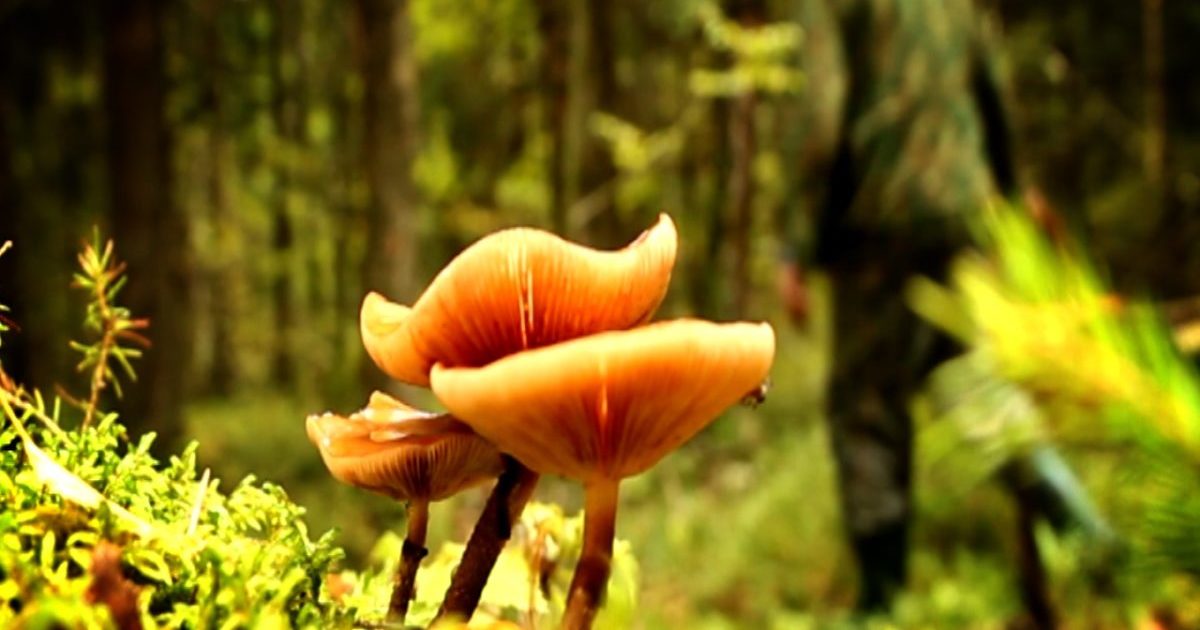 You may be interested in:
You may be interested in:What trees oyster mushrooms grow on
The name of the mushrooms says a lot - just see how they grow. Oyster mushrooms are located on trees and stumps as if hanging in the air.
In nature, they are absolutely unpretentious, little dependent on high temperatures, prefer coolness, begin active growth from September to December. About 30 varieties of this fungus are known, and only 10 of them are grown under artificial conditions.
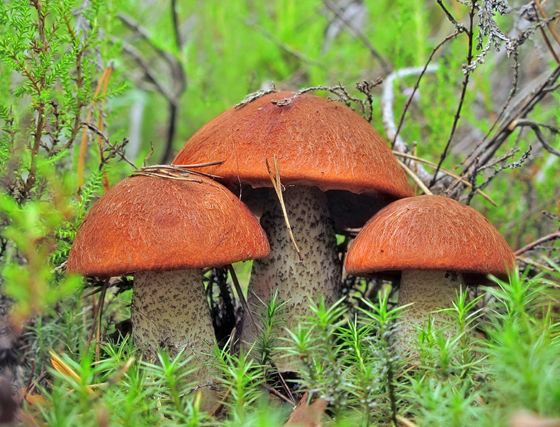 You may be interested in:
You may be interested in:Common or oyster
Common oyster mushroom (Pleurotus ostreatus) - found in broad-leaved forest, prefers stumps and dead woods of deciduous species (birch, oak, elm, mountain ash). It has a semicircular hat resembling an ear, up to 20 cm in size, grayish yellow in color.
The pulp is white, has a pleasant smell. Collect this variety from June until the first frost. Young mushroom is edible, and often it can be found on the table in a fried, boiled, pickled form.
Horn-shaped, or plentiful
Another variety is carob, or plentiful, oyster mushroom. As you can see from the photo, her hat is cream-colored, has a concave shape with wavy edges, different sizes - from 3 to 12 cm. It grows preferably in deciduous forests (birch, oak, elm, mountain ash).
It is better to collect in the summer, since it does not tolerate low temperatures, which is why it will be difficult to find it in cold weather. It lives on the trunks of mountain ash, oaks, birches, maple. It is used as a filling for pies and other flour products, as well as in fried and pickled form.
Pulmonary
Pulmonary oyster mushroom has its own, distinct from others, feature - it has a very delicate appearance. The body is white, the cap is convex in shape, down. Due to such a sophisticated appearance, mushroom pickers often worry that mushrooms will be damaged during transport, but this is not so.
Despite the delicacy, they are quite strong and hardy. It grows mainly by families, on the trunks of old birches, beeches, oaks. Relatively indifferent to cold weather, collect it right up to the first frosts.
Lemon (ilm)
Lemon, or elm, variety is especially common in Asia, North America and the Far East. Although at home it is grown quite successfully. A rather atypical name for the mushroom, this species acquired due to its color. The color of the legs and fruit body is bright yellow. Taste is very much appreciated, dishes with its addition acquire a delicate nutty shade and bright aroma.
Another name - elm, or ilmak mushroom, characterizes the place of growth, and not external signs. The most typical place to find a fungus in nature is elm - a special type of elm growing in the Far East.
This is one of the most popular species, but due to the fragility of these mushrooms is difficult to transport. If you are engaged in growing lemon oyster mushrooms at home, then sawdust, poplar, beech, beech, birch or oak wood are best for this.
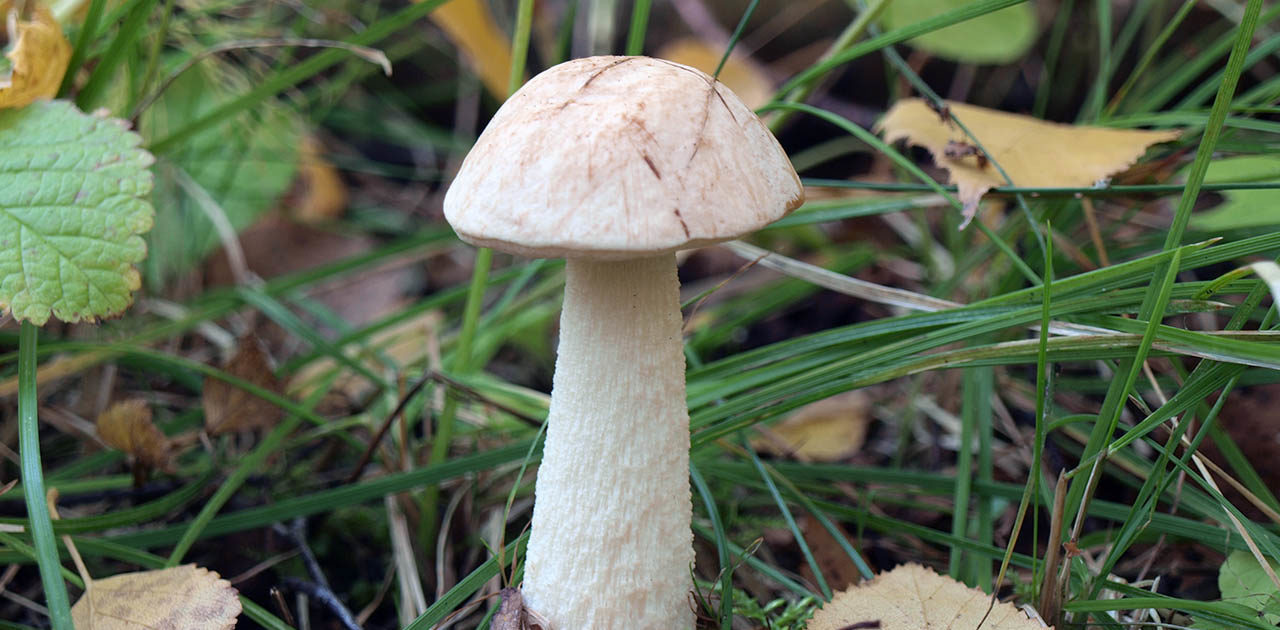 You may be interested in:
You may be interested in:Pink
In vivo occurs in countries with a tropical climate or in the Far East, on the trunks of deciduous trees. It grows mainly by families, so if mushroom pickers are fortunate enough to meet a group of pink oyster mushrooms in the forest, then it is difficult to leave home without a full basket.
At home, it is easily cultivated, for this they usually use straw or corn waste. It is believed that the pink look does not differ in special taste or nutritional properties.
Late or Autumn
Autumn oyster mushroom (Pleurotus salignus) grows on trunks and stumps of deciduous trees. The hat resembles an ear shaped in one direction, gray or gray-brown in color, reaches 12 cm. As for the leg, it is not smooth, but has a light fluff on its surface.
The pulp has a white color and a pleasant aroma. Autumn oyster mushrooms are harvested mainly in September and October, and served in a fried, boiled and pickled form.
Oyster mushrooms growing on the ground
There are mushrooms of this species growing on the ground - on tree roots and low stumps.
Royal
The royal look is also called “eringi”. Compared with other representatives of this group, they are larger, have a light yellow or white fruiting body. They live on the ground, and the mycelium is located on the roots of trees, stumps, and not on trunks.
Royal oyster mushrooms actively grow and develop in the spring. At fairly high temperatures in spring, the first crop can be lucky in March, with a more moderate and calm climate, they reach their peak growth by May. Valued for its high nutritional value, excellent taste and high content of vitamins and proteins.
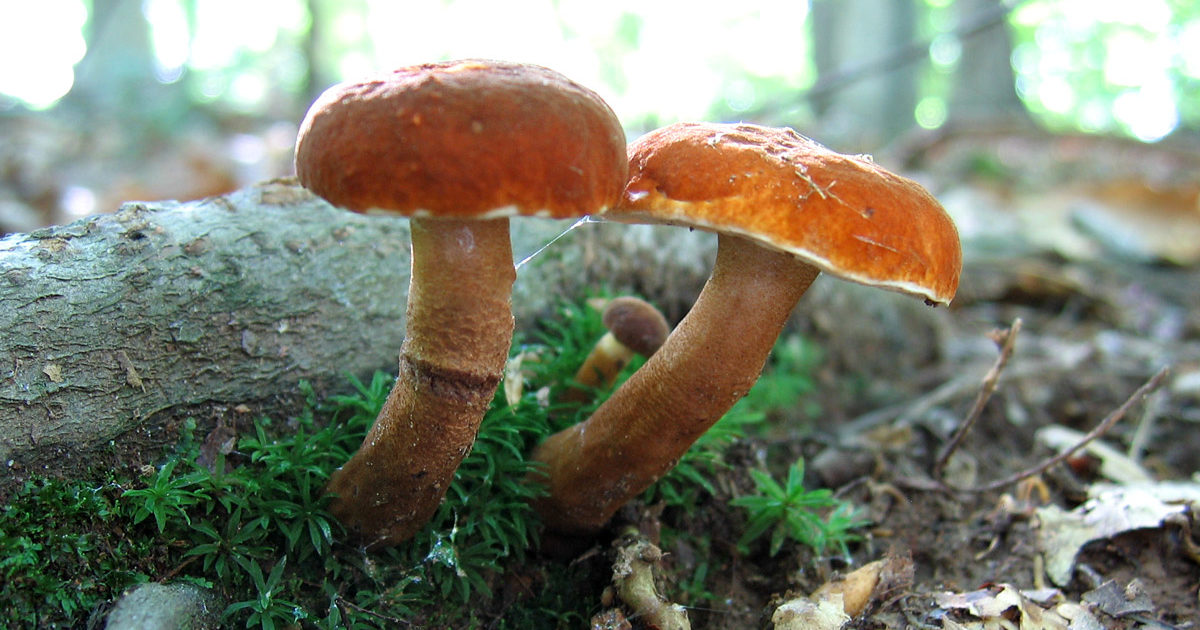 You may be interested in:
You may be interested in:Steppe
Oyster mushroom steppe (Pleurotus eryngii) differs from its relatives by geography and place of growth.Unlike forest species, this species is found in nature in the steppes; it prefers not plant trunks, but plant roots. The hat has a diameter of up to 25 cm and a gray-red color, the leg is light, almost white, can reach a height of 4 cm.
The nutritional properties of the oyster mushroom are well-known - in its composition it is close to high-quality dairy products, for which mushroom pickers are especially appreciated. Collect this species in wastelands and pastures from spring to autumn.
Unlike doubles
Going for mushrooms, one thing to remember is that there are no poisonous oyster mushroom counterparts on the territory of Eurasia. The only poisonous double grows far from us - in Australia, and is called Omphalotus nidiformis.
However, there are false mushrooms. The false representative has brighter colors and shades than the real one. The two most popular species are orange oyster mushroom and wolf pilothorn. They are not poisonous, but they are completely unsuitable for eating, because they have an unpleasant smell and are very bitter.
False orange oyster mushroom is painted in a bright orange color. There are practically no legs, and clings to tree trunks with a spreading hat. At a young age, it smells like melon, while an adult mushroom has the smell of rotten cabbage.
The pulp is dense, the surface is fluffy. Located on a tree bark with a fan-like bunch. Due to the outward beauty, some gardeners acquire spores of these mushrooms in flower shops and decorate gardens and landscapes with them.
Felted pilgrim, or wolf, is also inedible. It grows on dead wood of both coniferous and deciduous plants. Most often found in nature from summer to mid-autumn. The hat is brown or cream, similar in shape to the dog’s tongue. Legs are almost completely gone. The pulp is bitter, with an unpleasant pungent odor.
Going for oyster mushroom to the forest, it should be remembered that mushrooms similar to oyster mushrooms do not grow on the ground, they are found on the trunks of living and dead plants, as well as their stumps.
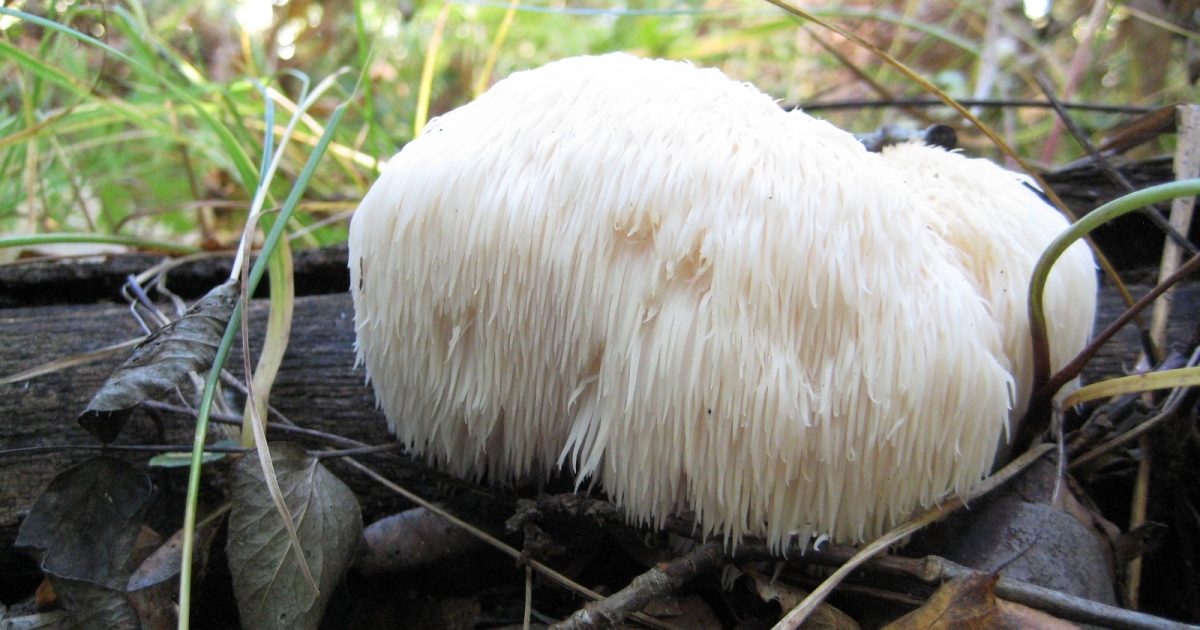 You may be interested in:
You may be interested in:Locations and collection rules
The habitat of oyster mushrooms are primarily deciduous forests with a temperate climate. Oyster mushroom covered grows in the forests of Northern and Central Europe. But the steppe prefers wastelands and open areas from West Asia and India through Europe to the Atlantic Ocean. Lemon is found in the open spaces of the Far East and North America.
Oyster mushroom is easy to cultivate at home. All she needs for growth is a relatively stable temperature of +17 ° C and an air humidity of about 70%. If it is possible to create such conditions in the garden, then oyster mushrooms will grow in the garden on stumps and snags. In the presence of the correct temperature regime, the mushroom grows within 3-4 days.
How to grow oyster mushrooms at home?
If desired, oyster mushrooms can be grown at home. To obtain a crop at home, any basis for the growth of mycelium is needed - sawdust, shavings, straw, corn waste, driftwood or stumps. It is necessary to observe the temperature regime at the level of +17 ° C and maintain humidity. This, as a rule, is enough to collect a quick and plentiful crop.
The base is placed in special bags with holes in place with seed. It can be bought from the manufacturer or ordered on the Internet a special set for growing.
Bags with prepared material are suspended in a damp room under the ceiling and periodically moistened without changing the temperature regime. The first crop can be obtained in two weeks.
Answers to widespread questions
Oyster mushroom has nutritional value, rich composition and excellent taste. It has a wide habitat and is available for collection over a long period of time, Unpretentious, easily cultivated in artificial conditions.

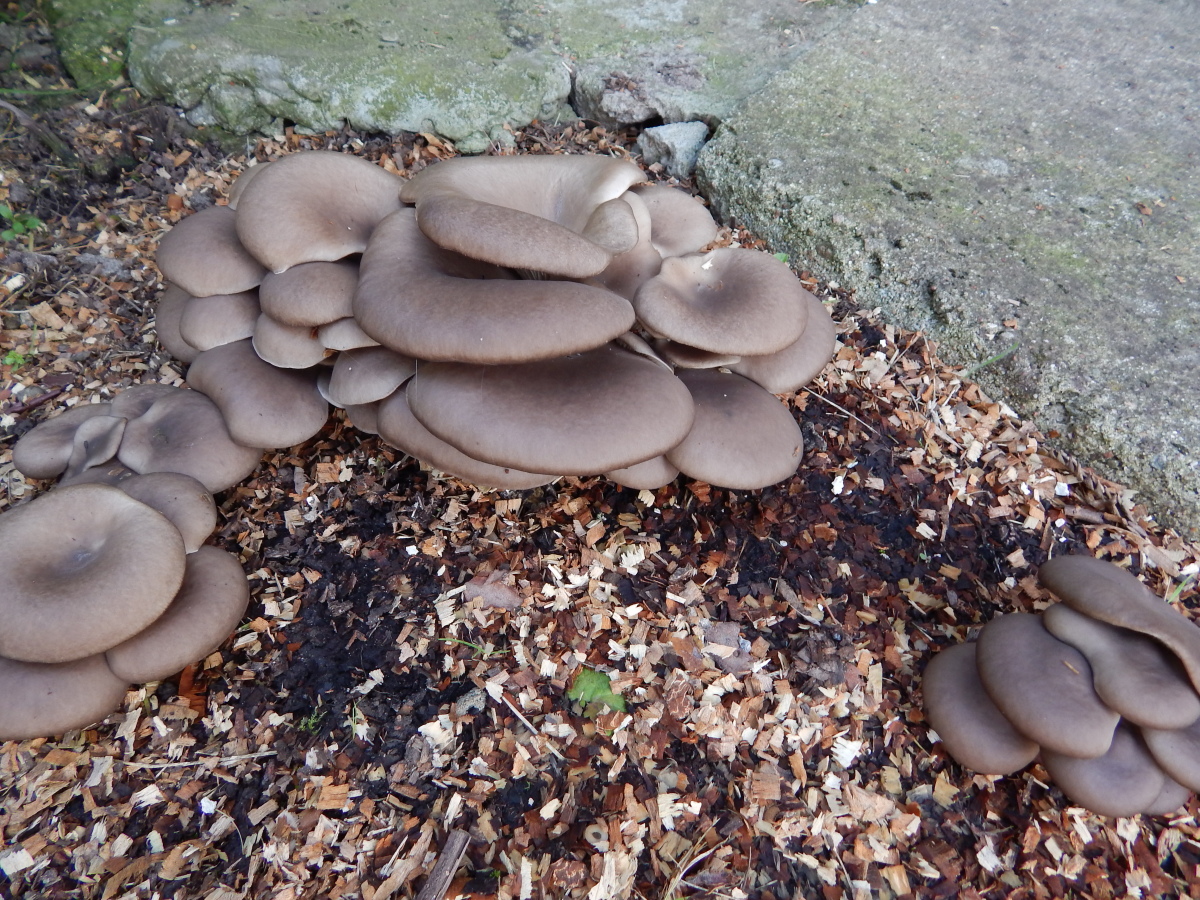
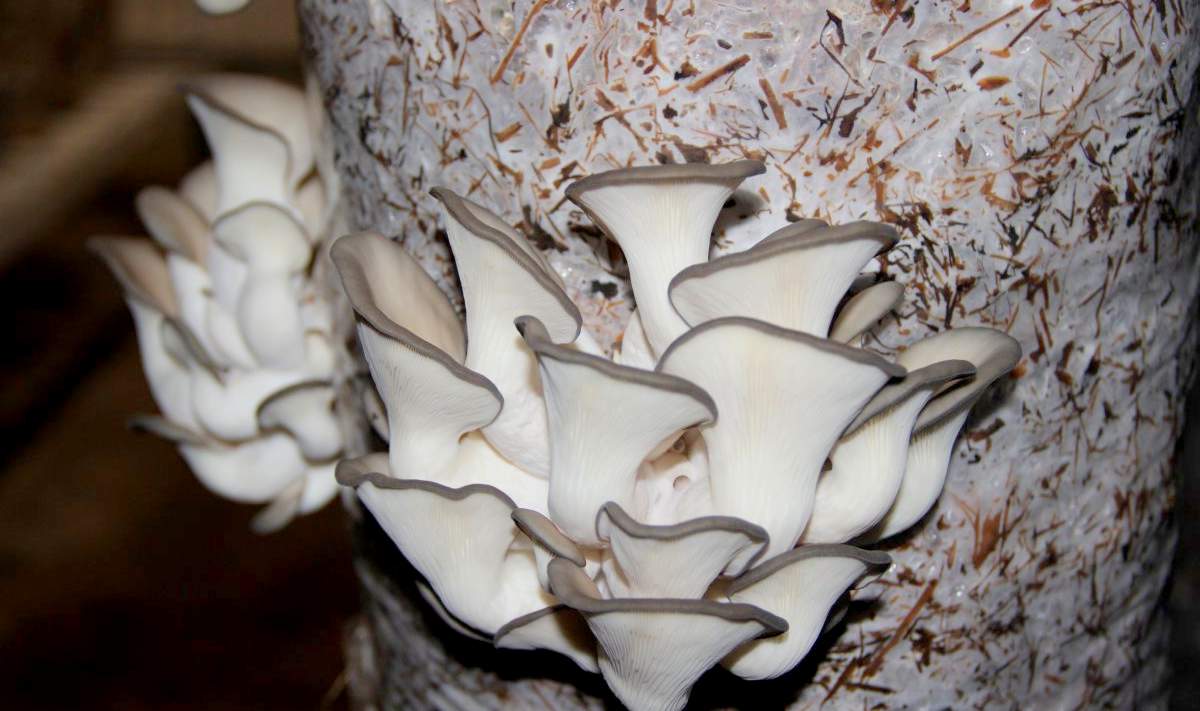
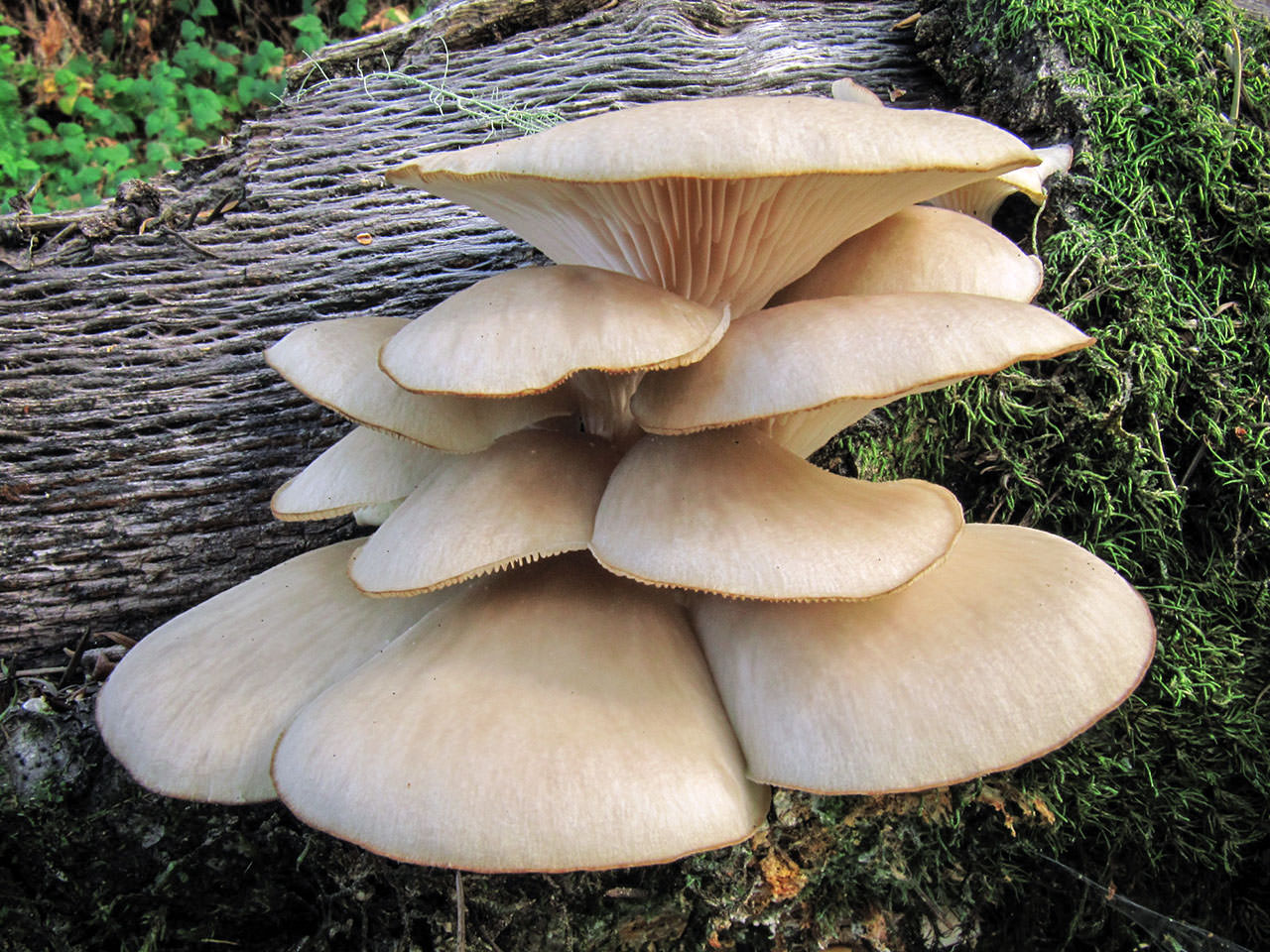
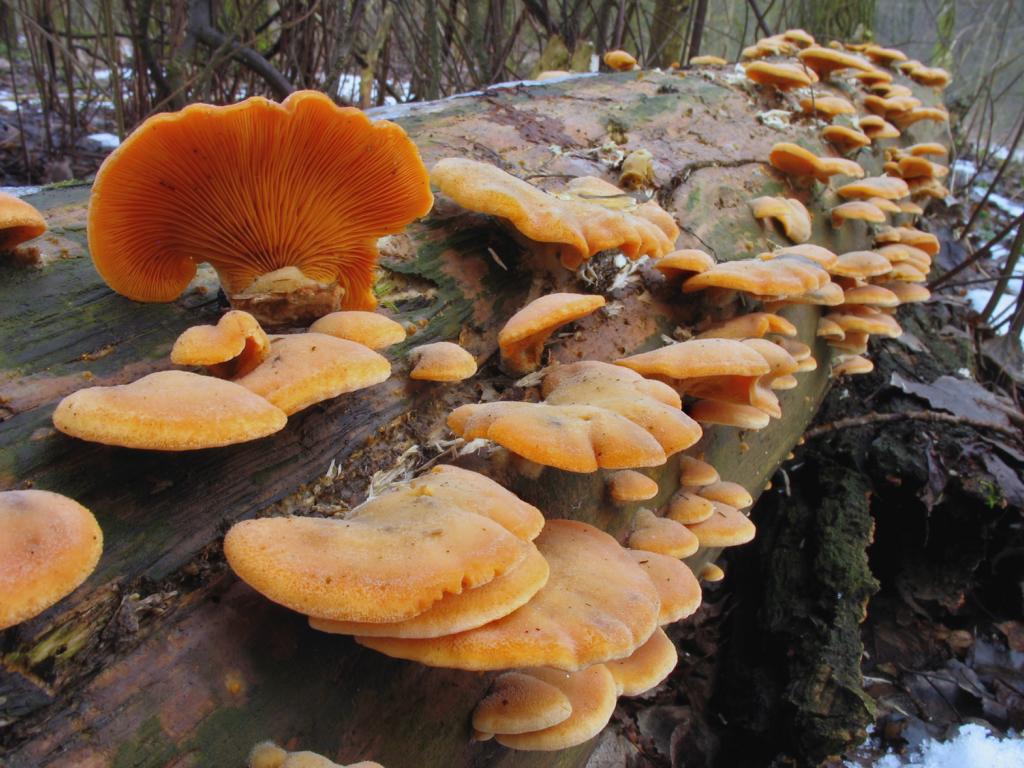
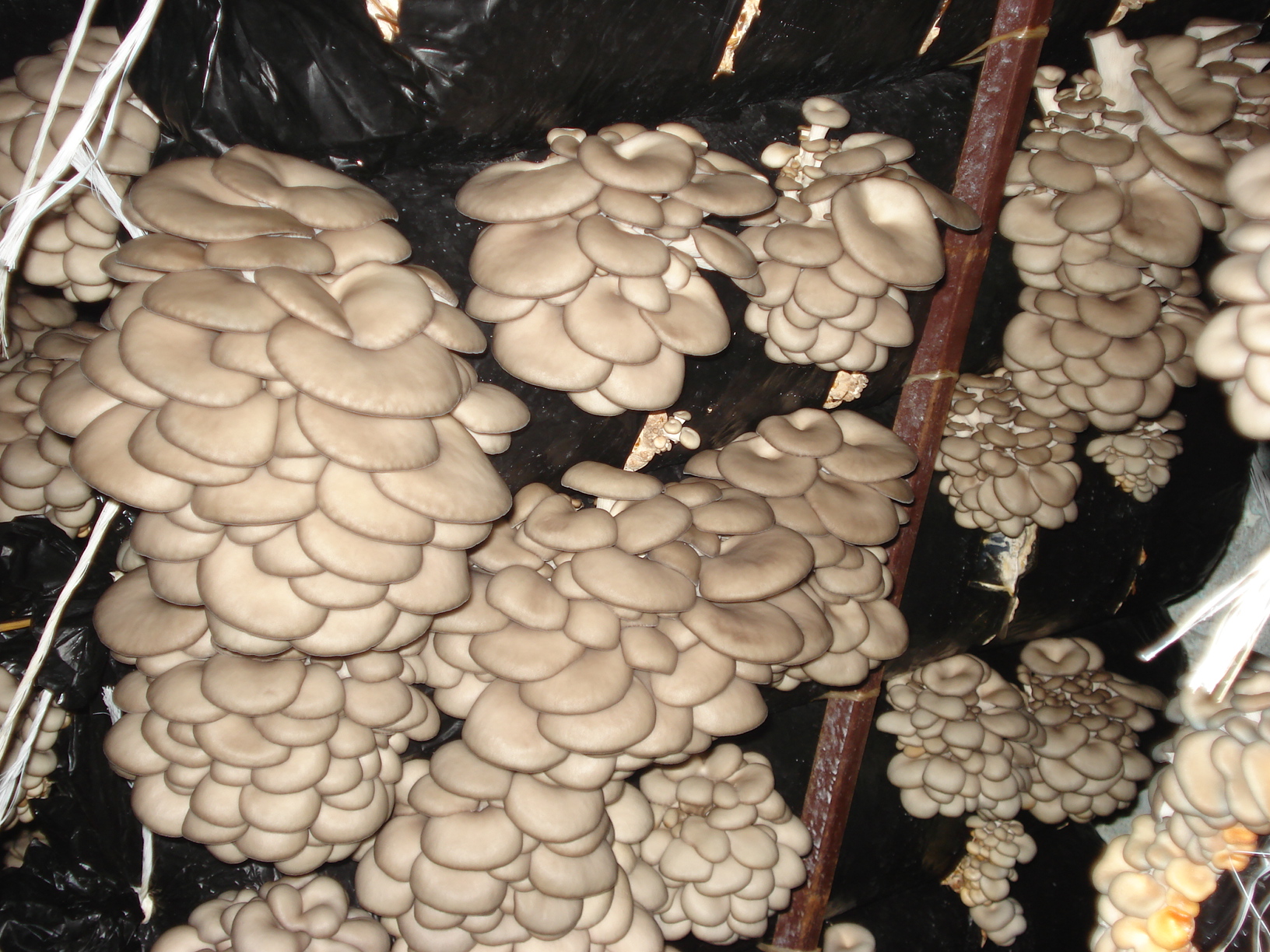
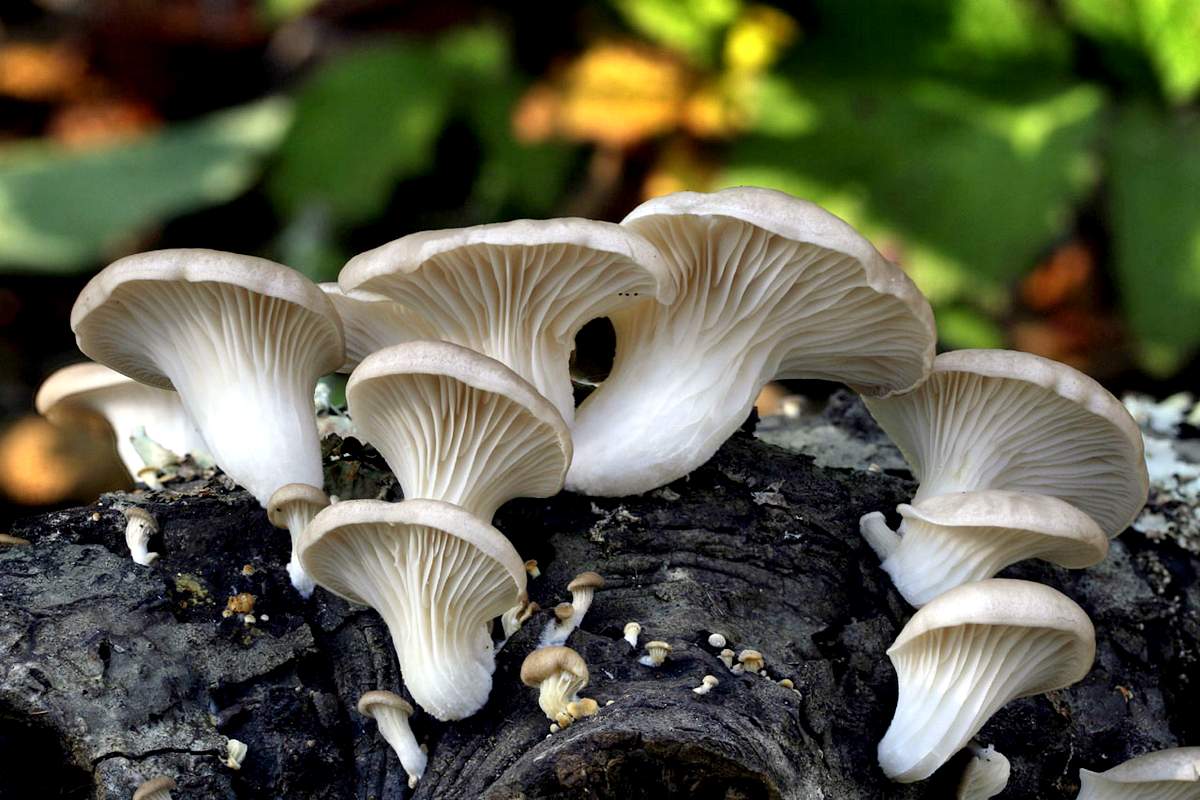
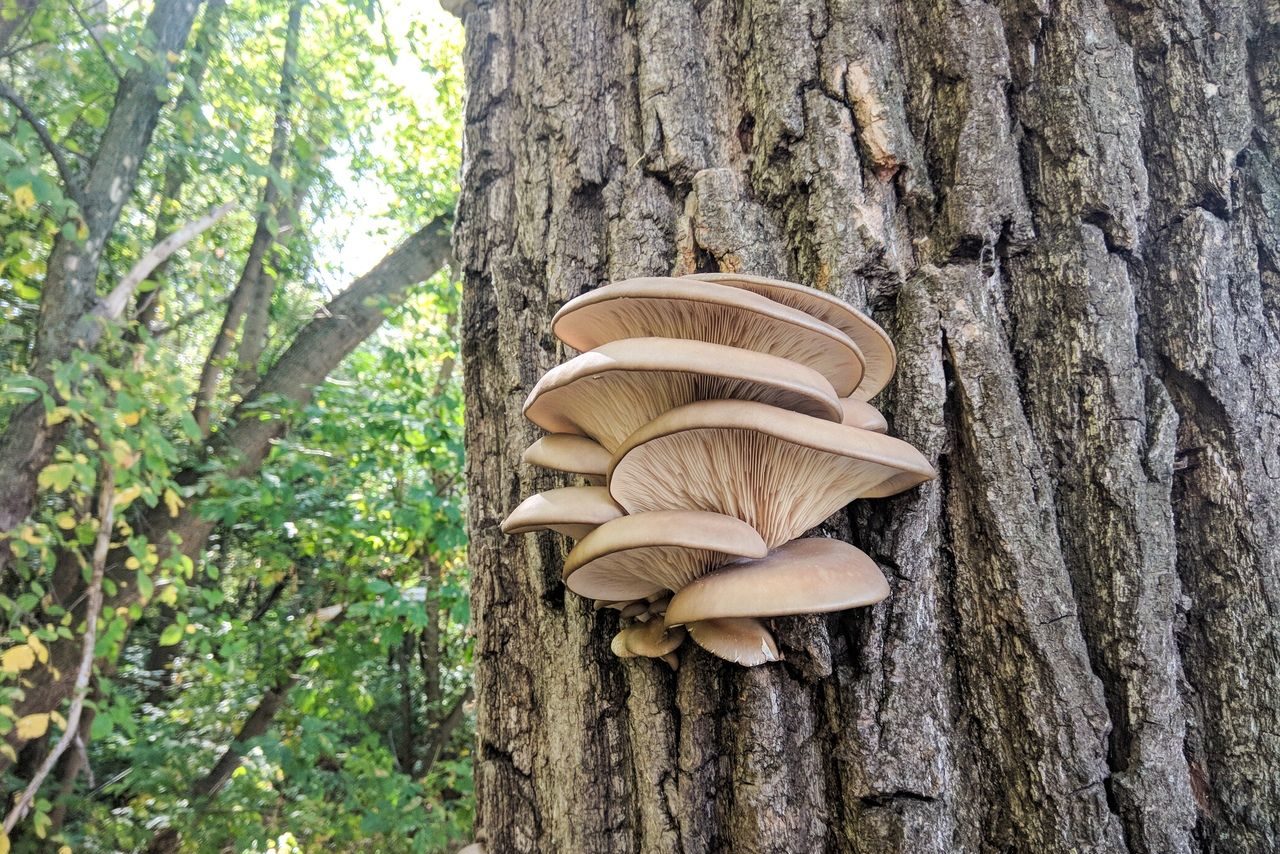

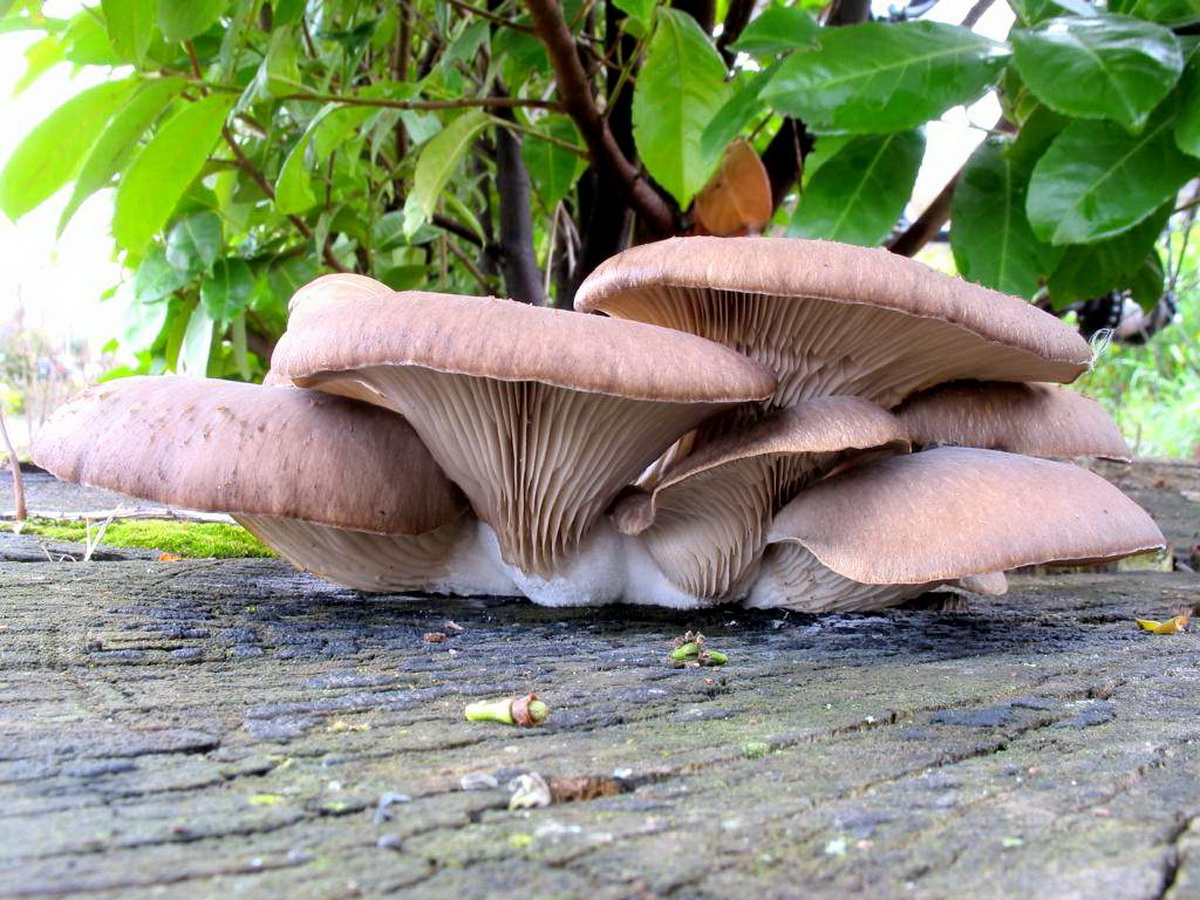
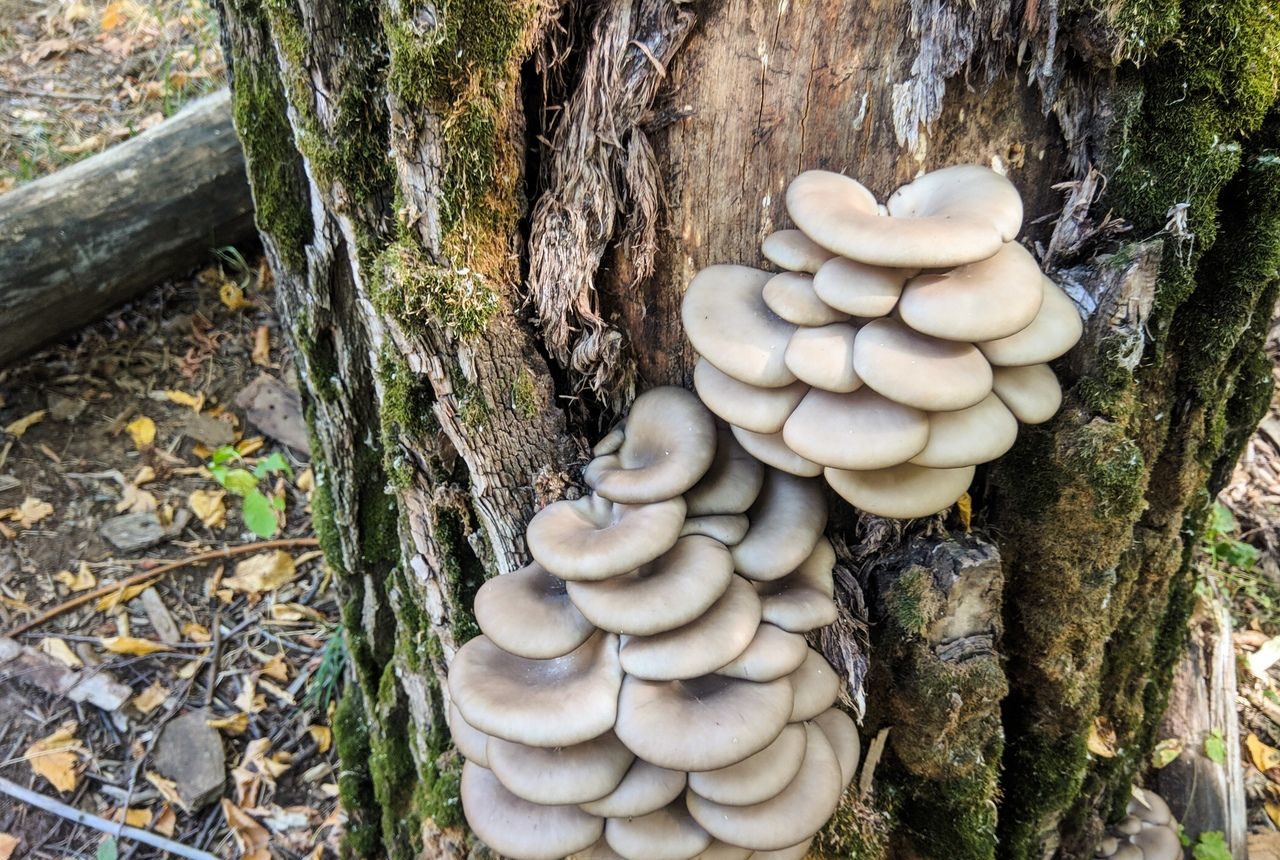
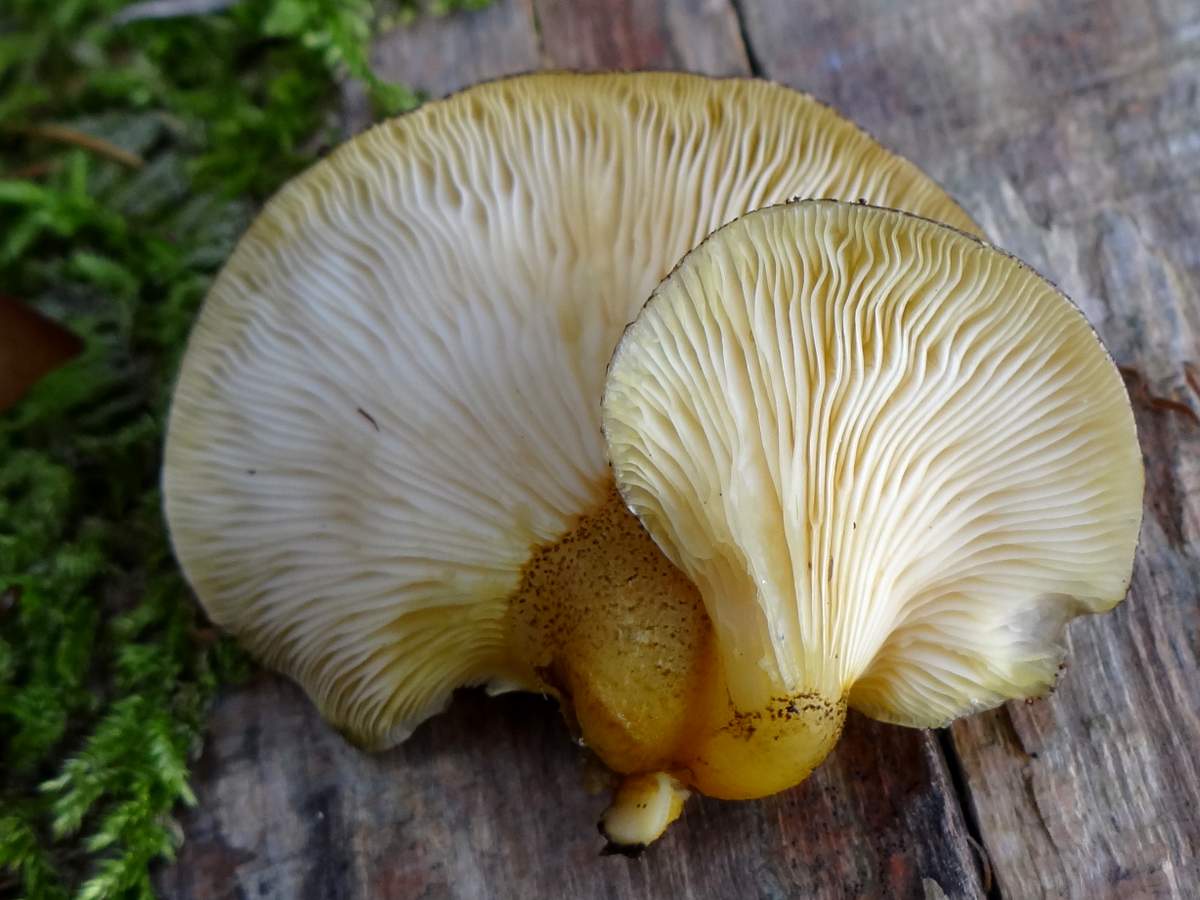
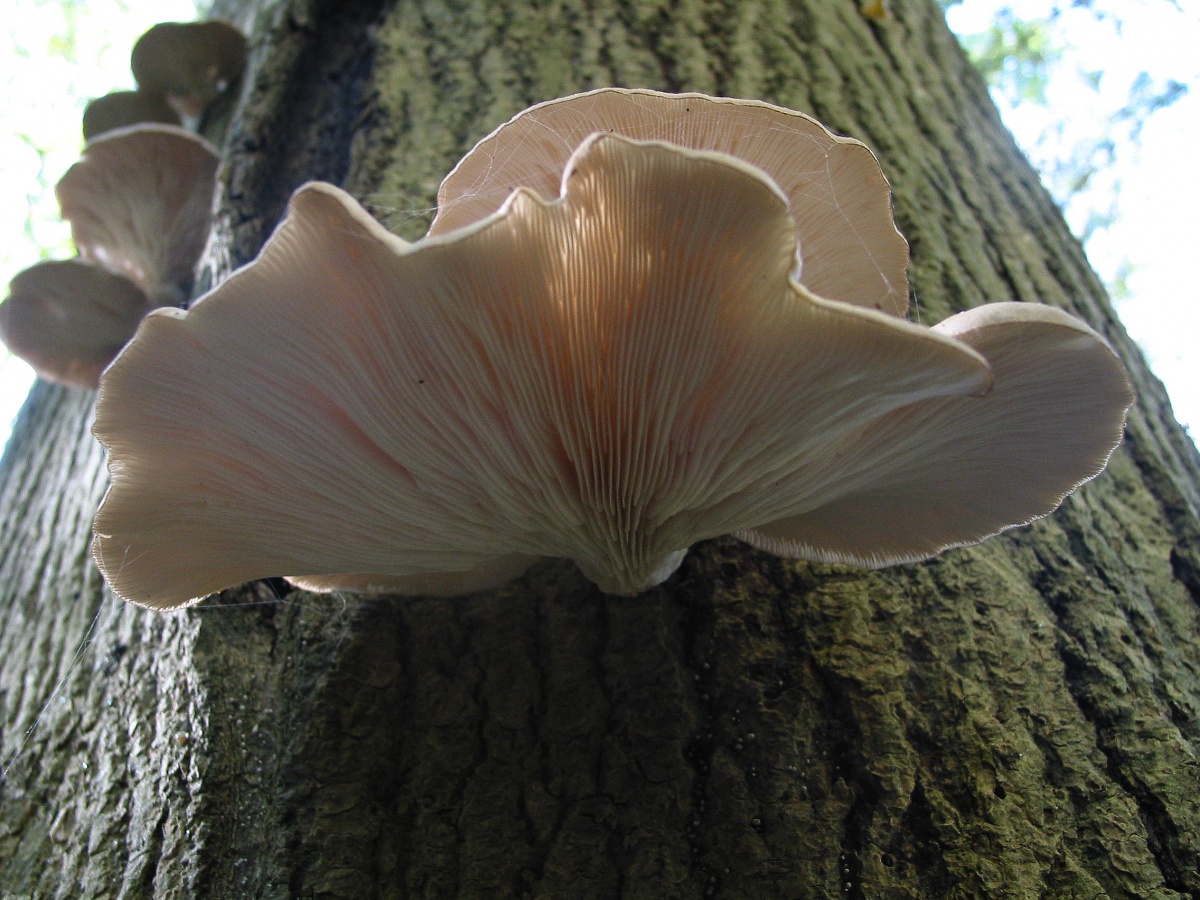
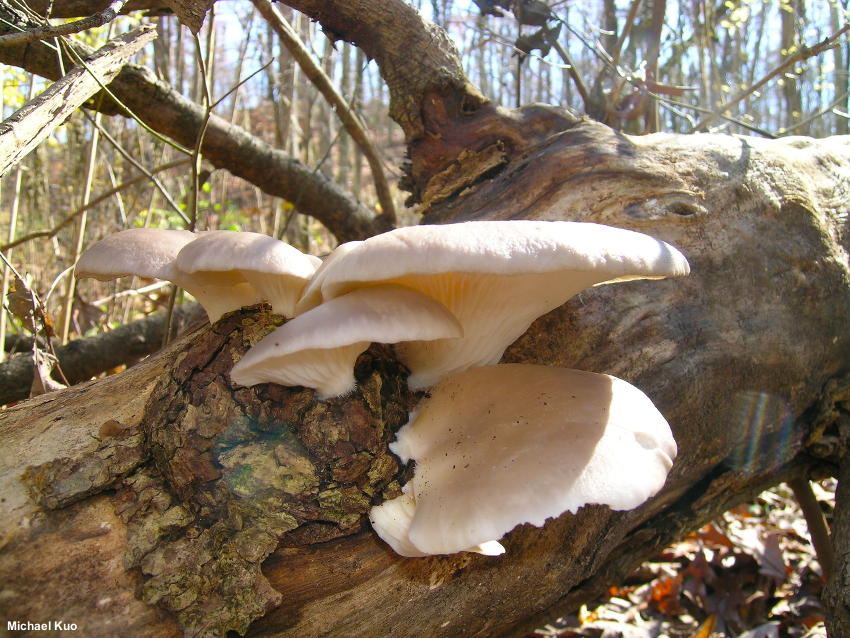
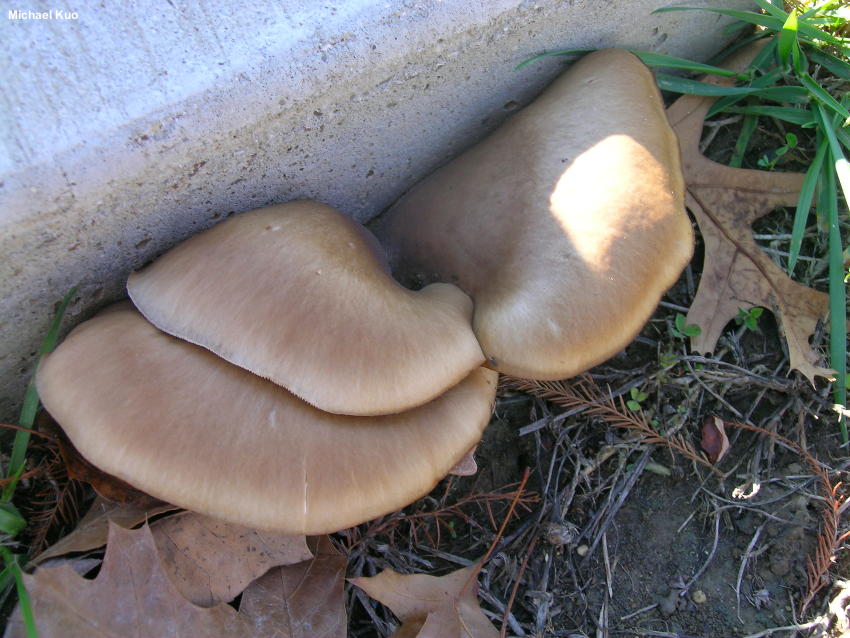
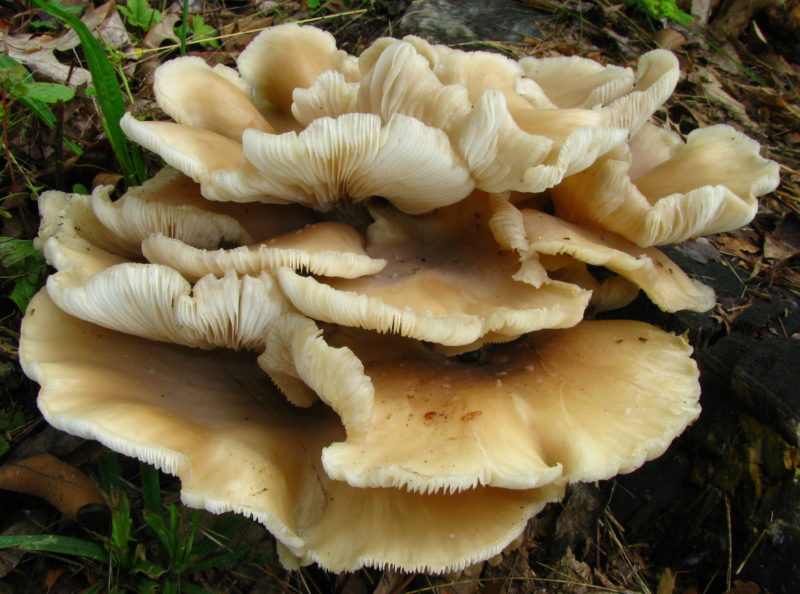

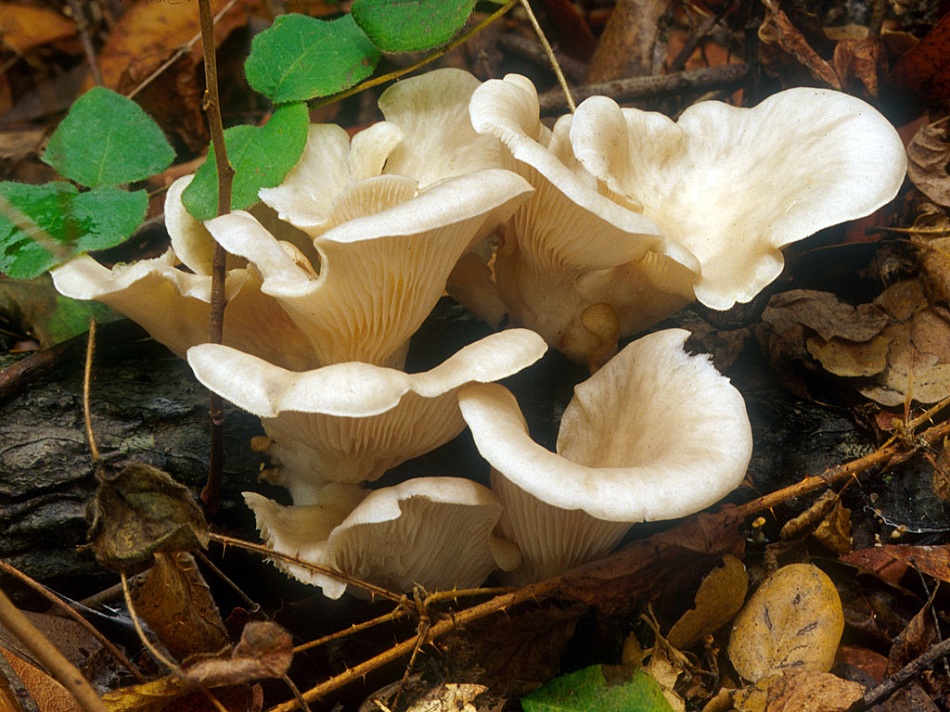
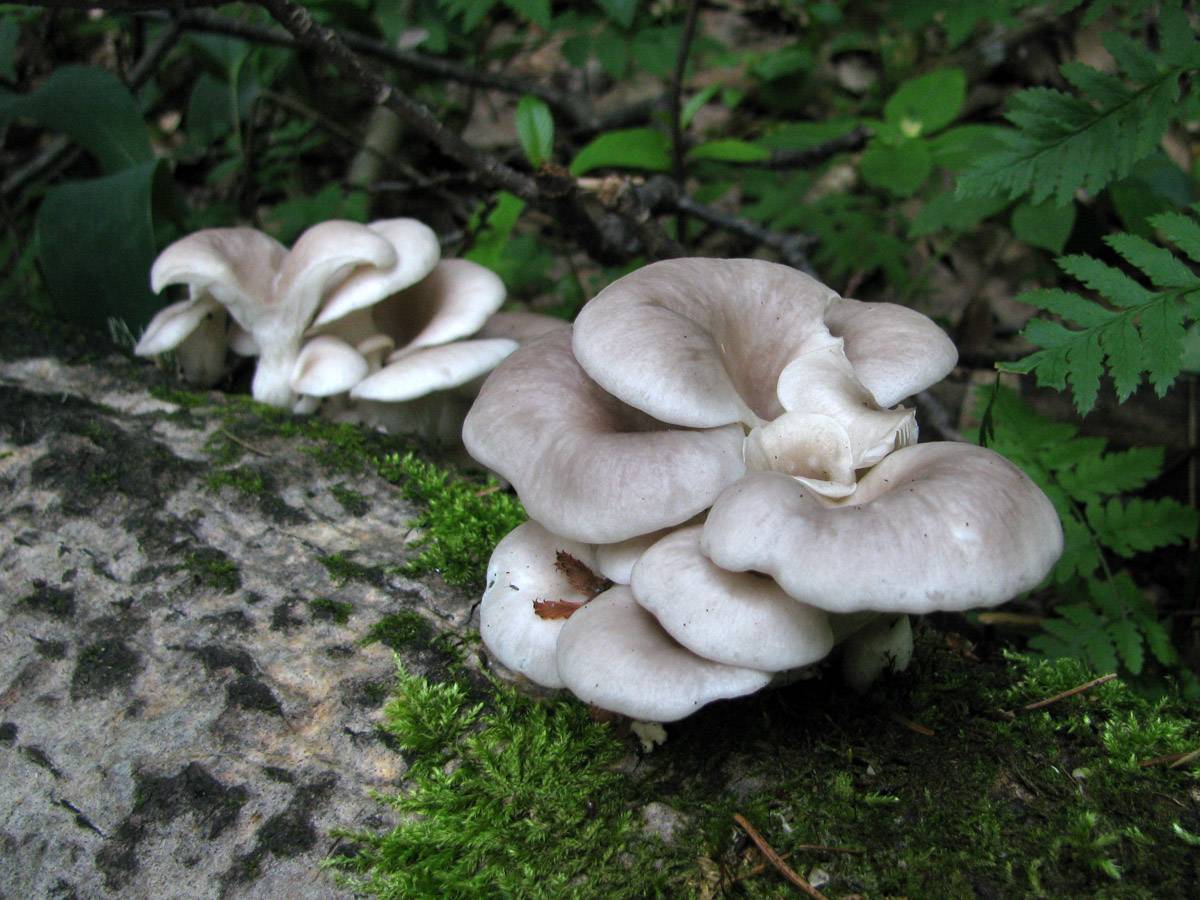
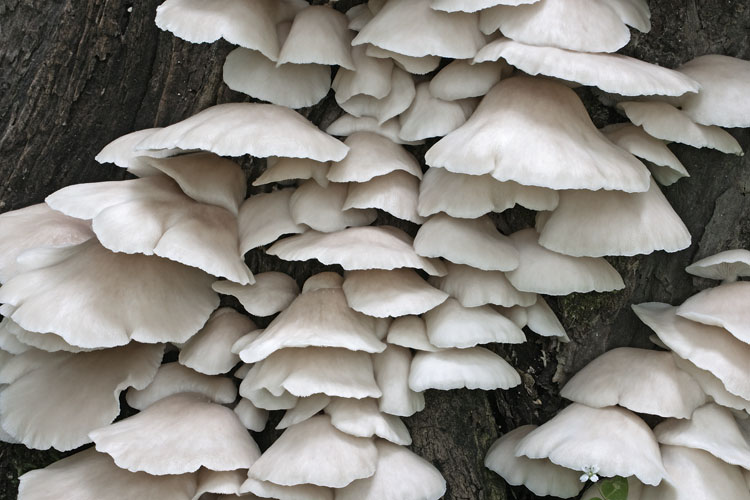

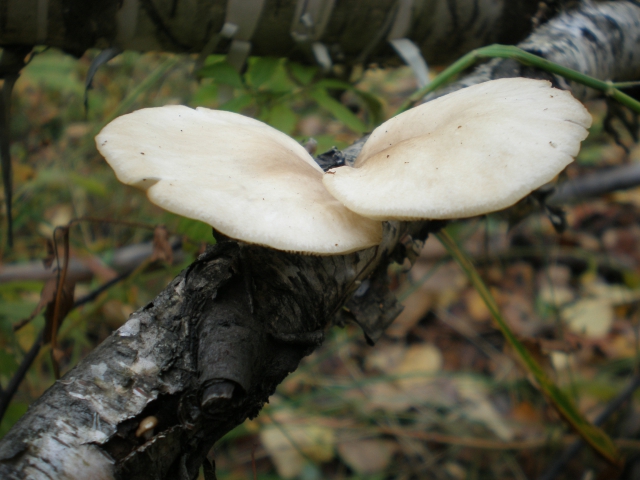

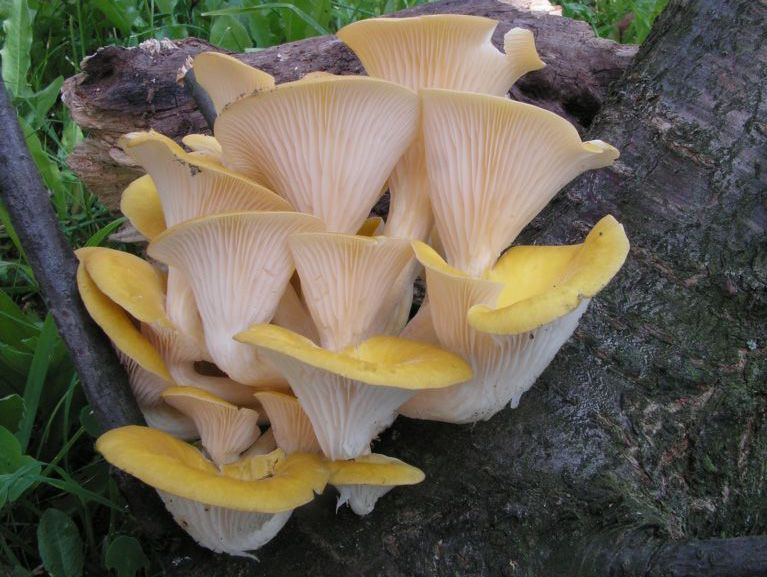
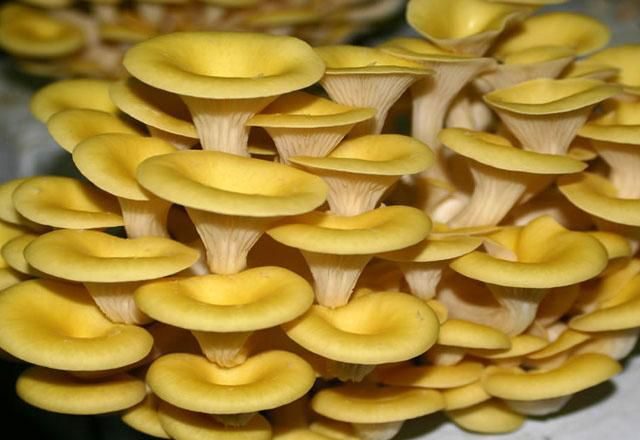
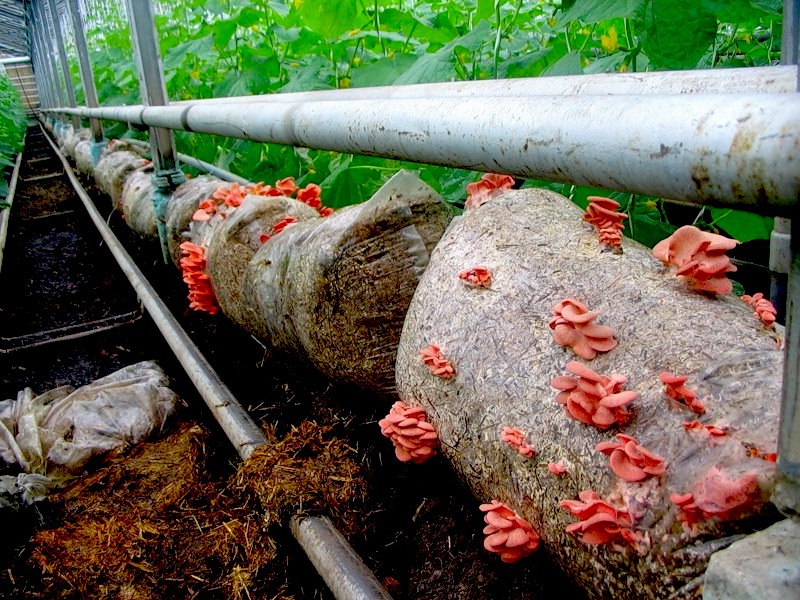
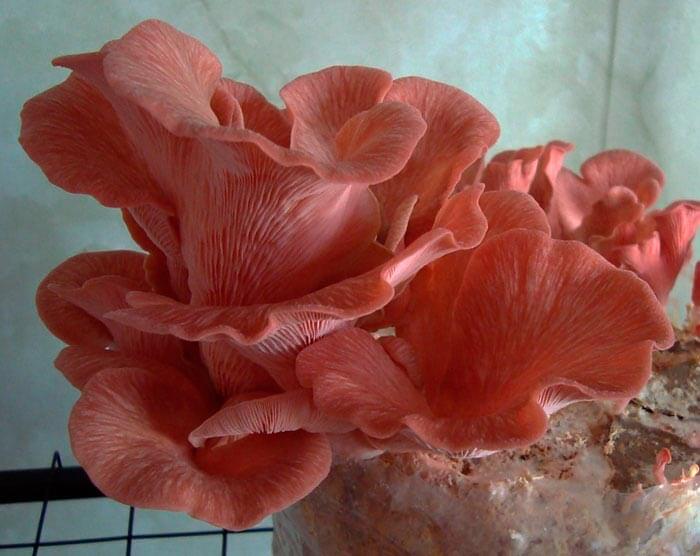

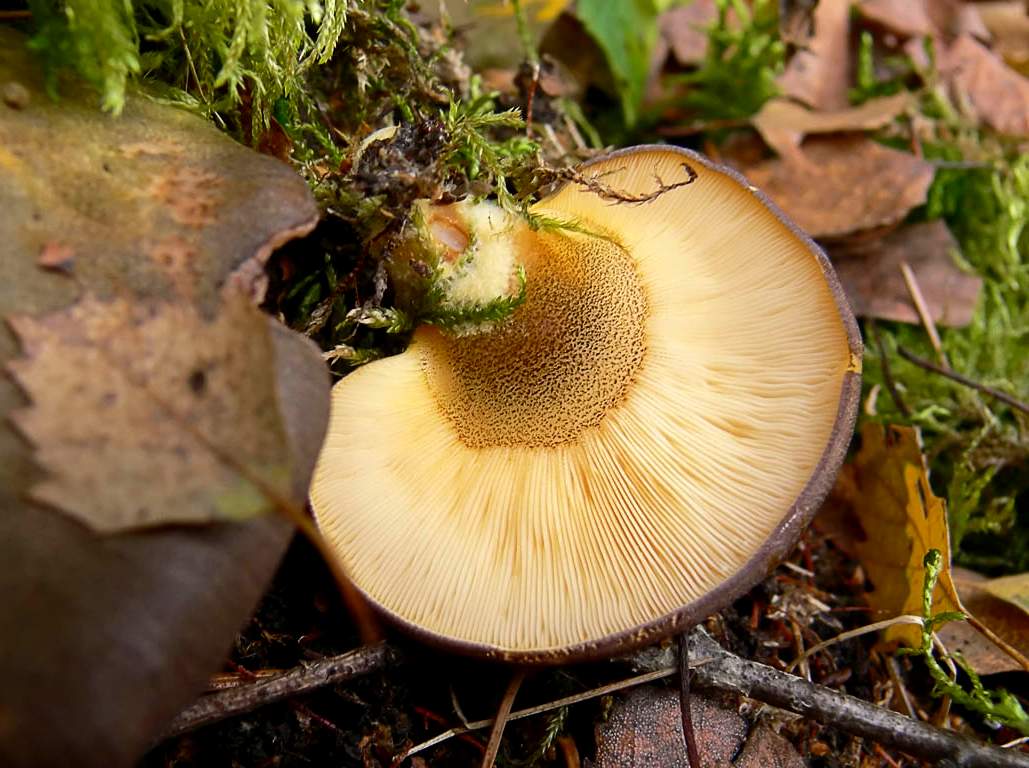
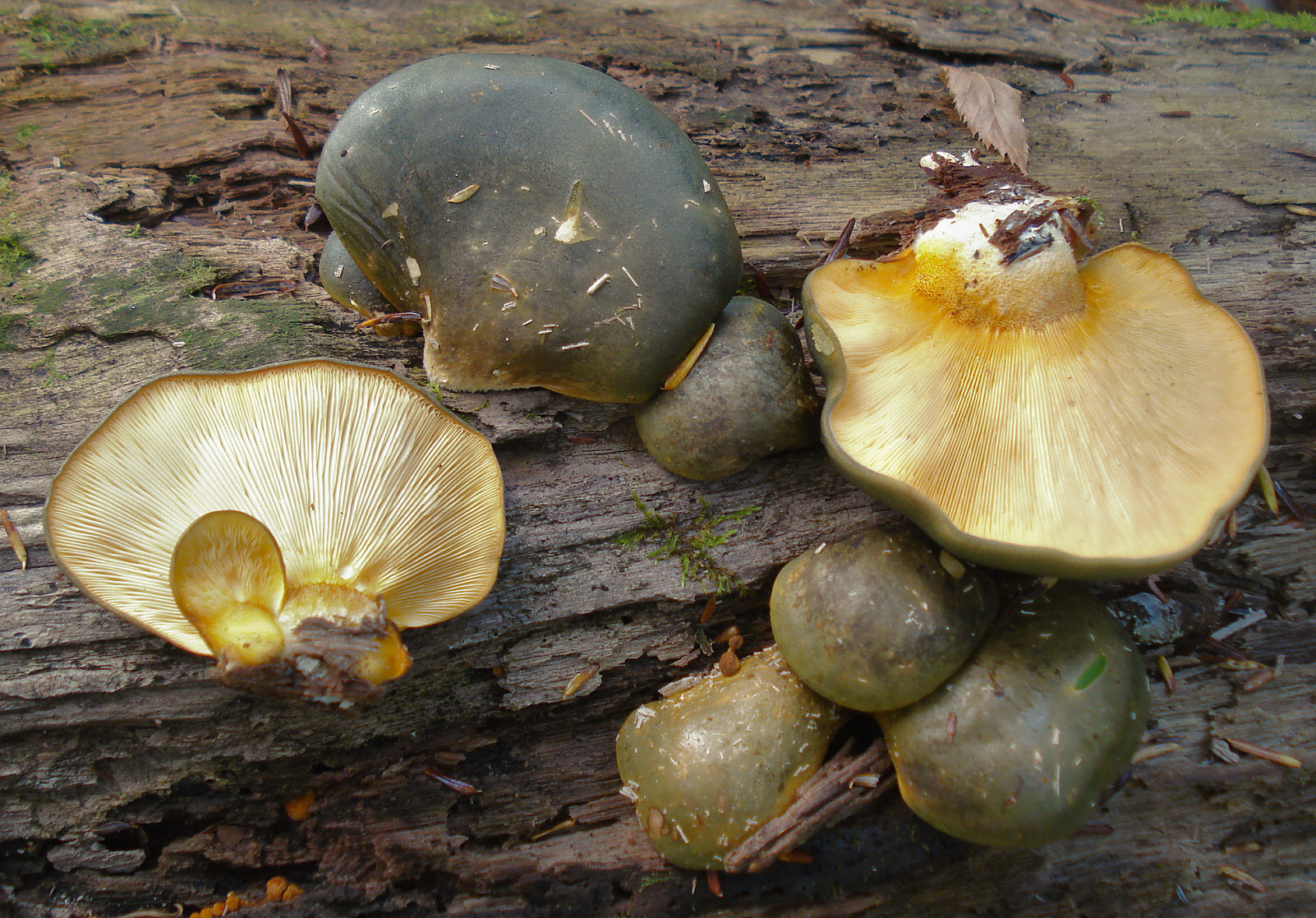
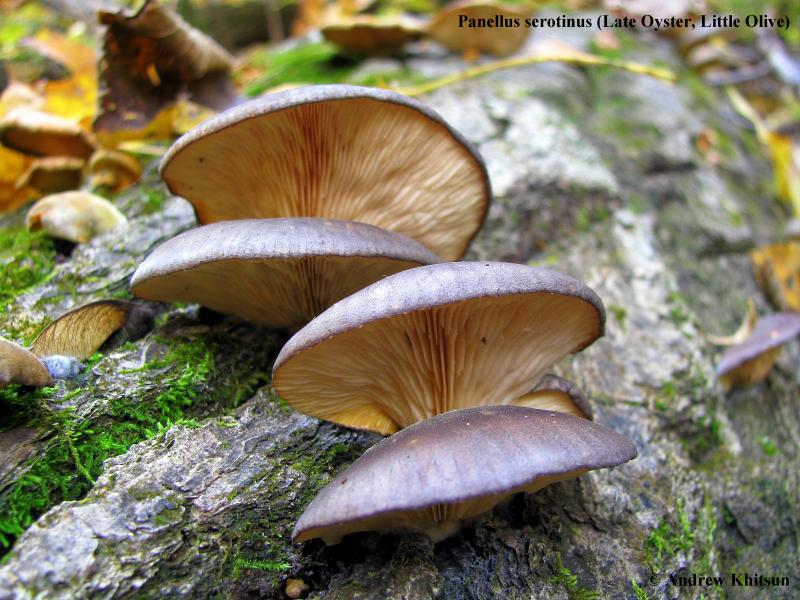
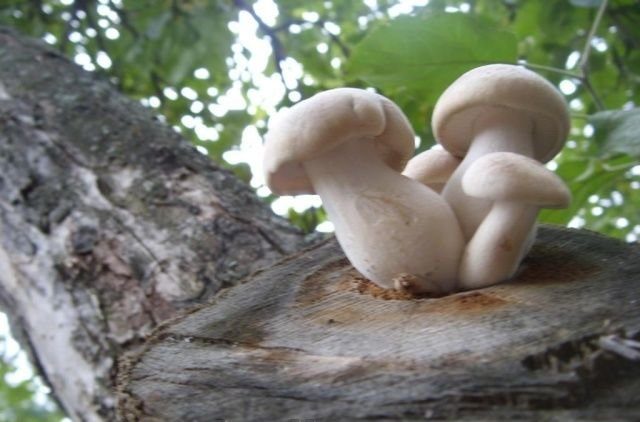
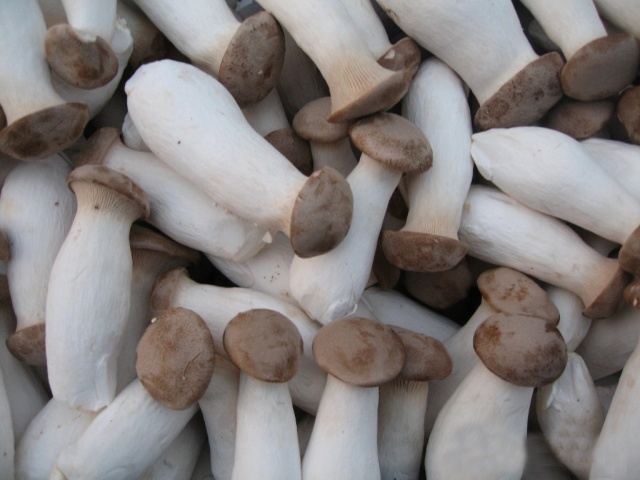
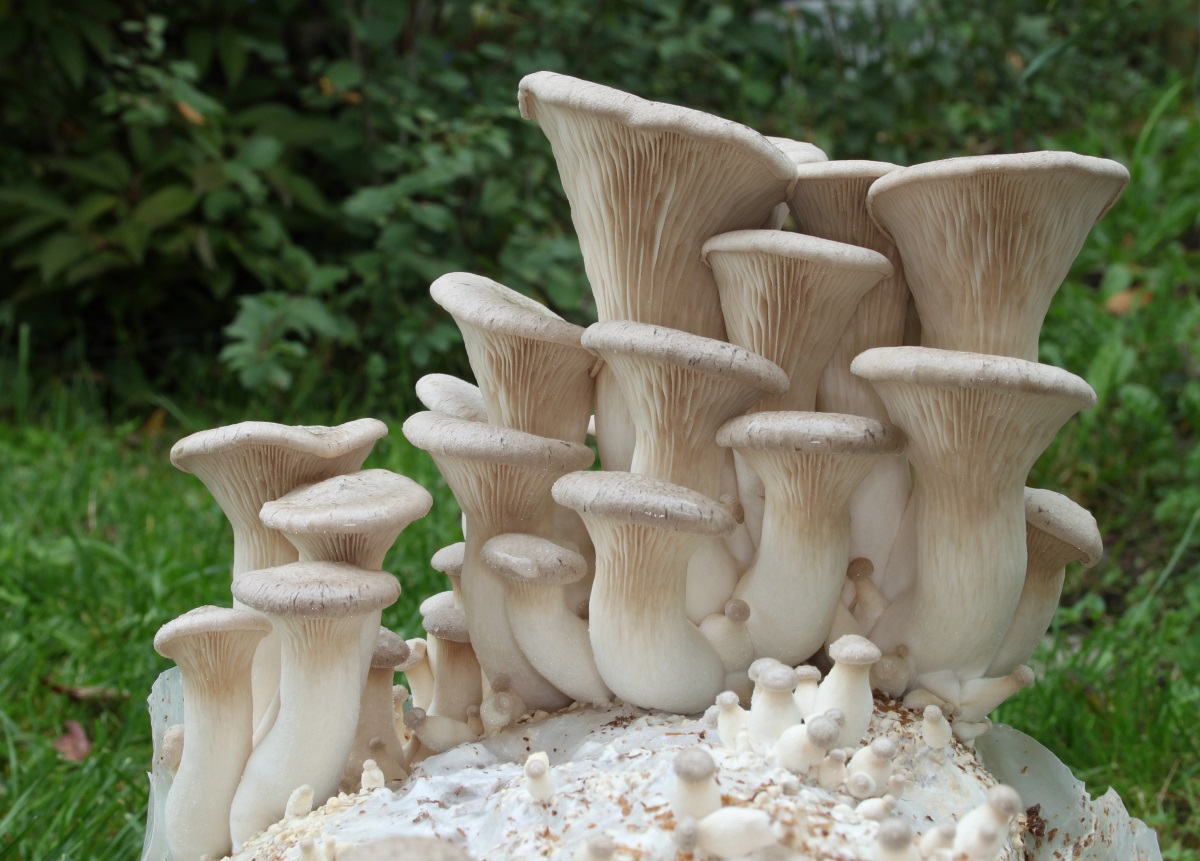
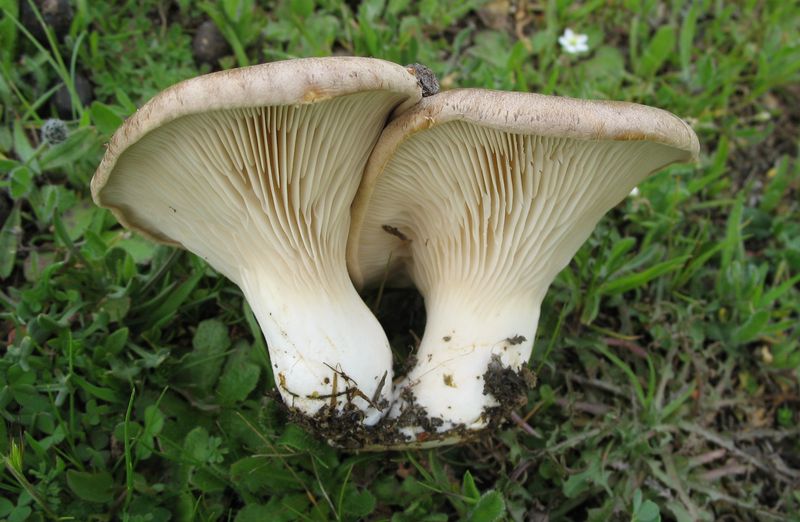
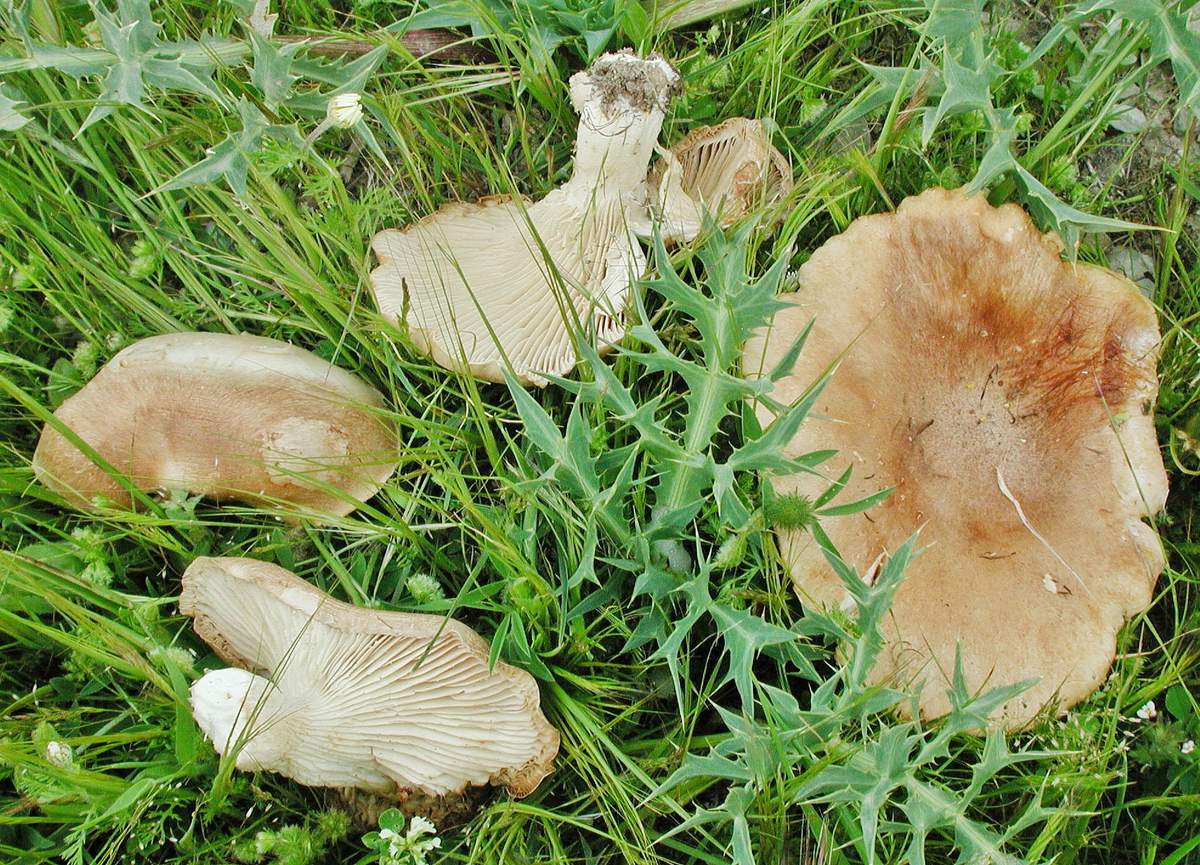
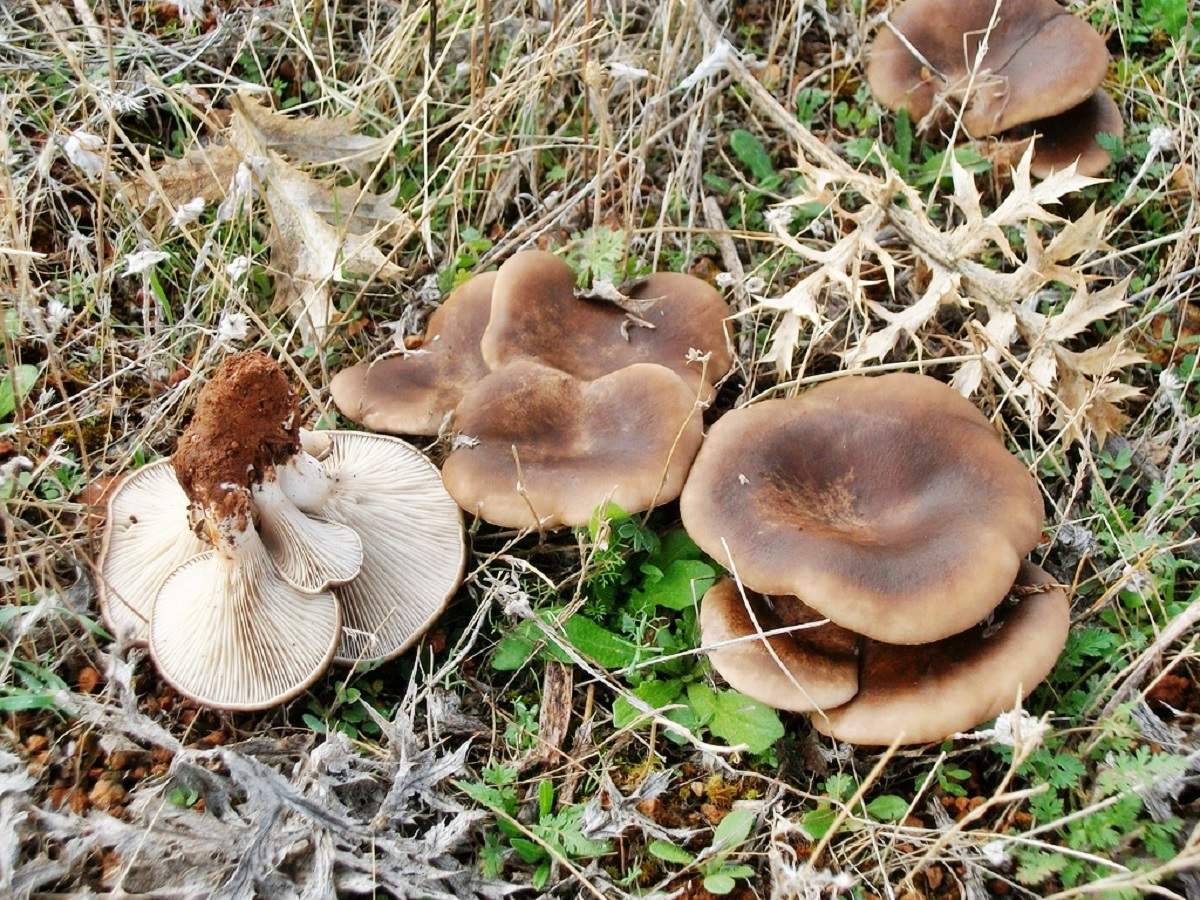
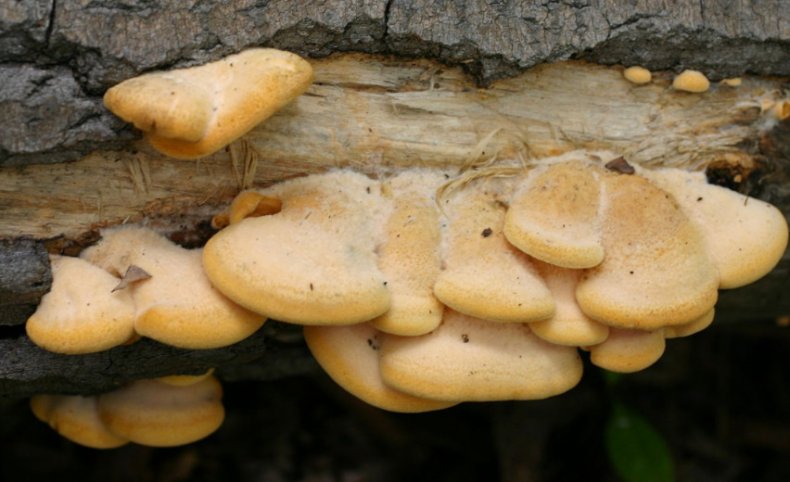
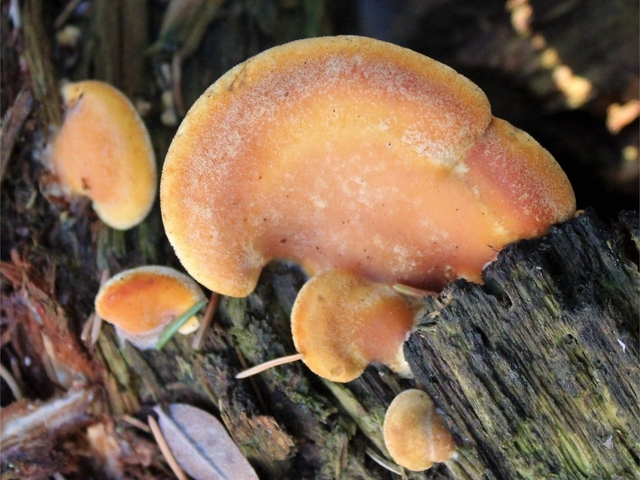
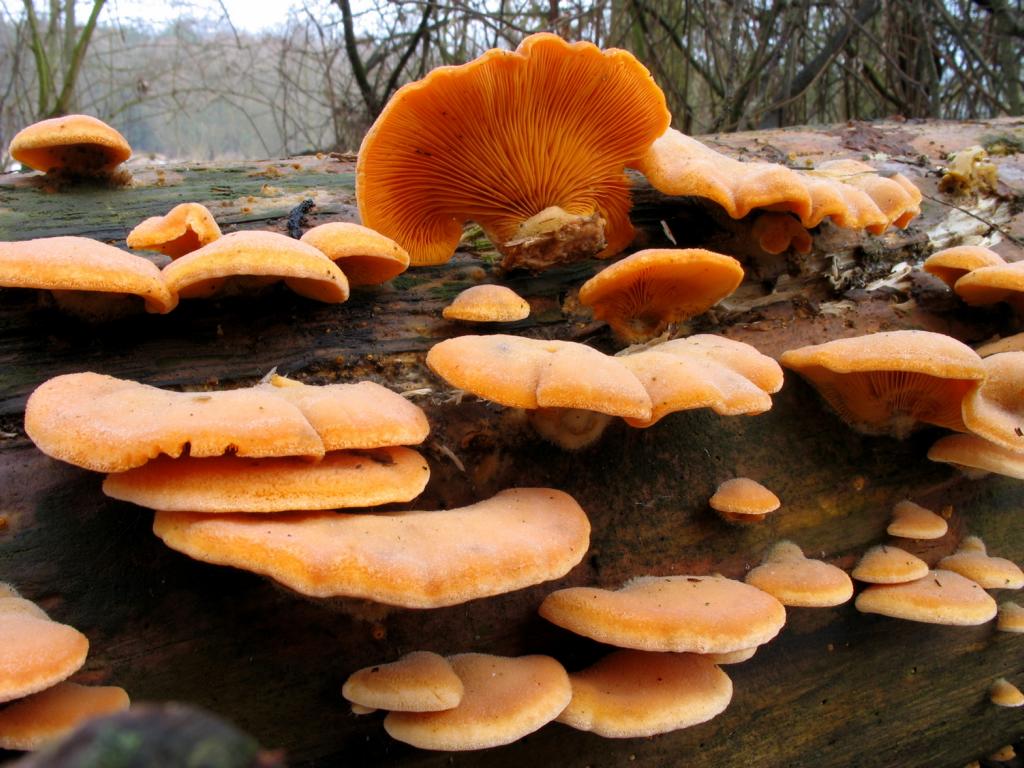
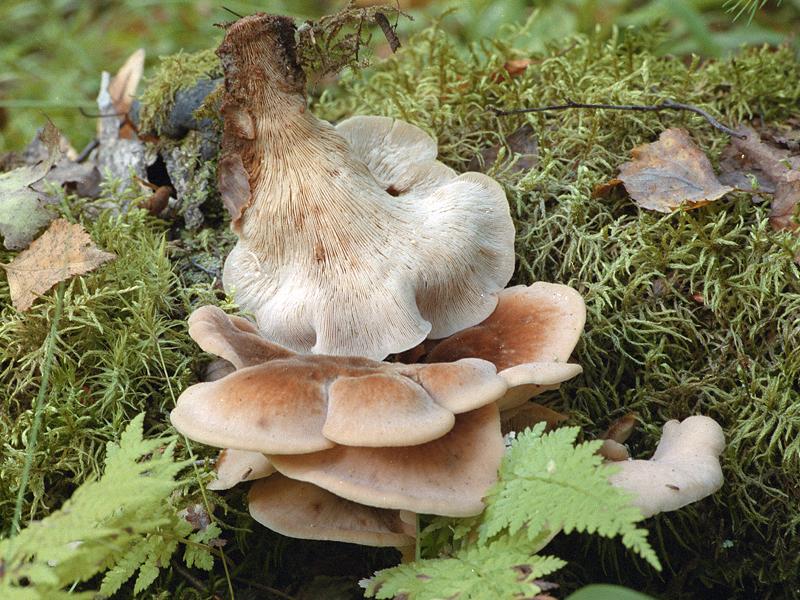


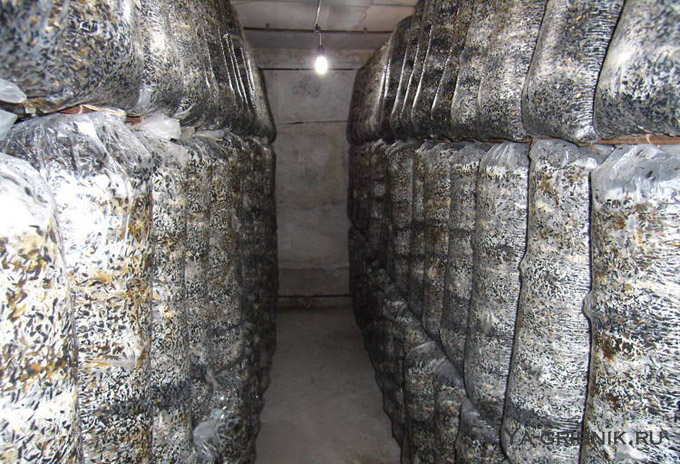
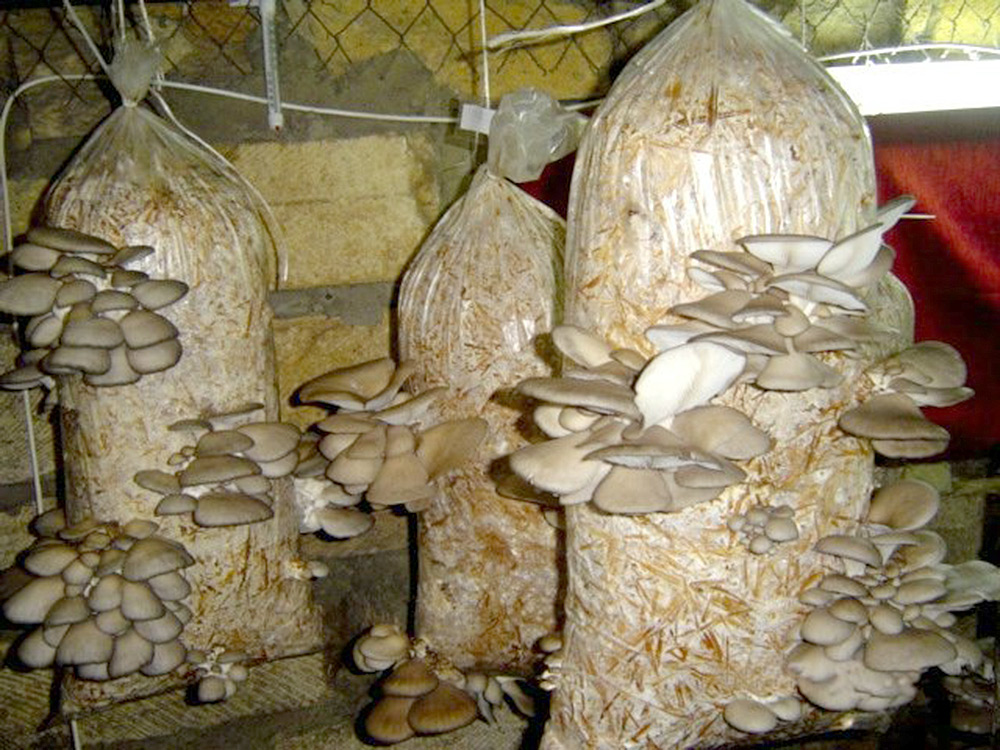
 Care and use of Kombucha at home (+22 photo)
Care and use of Kombucha at home (+22 photo) Edibility of the fungus of the motley umbrella and its description (+19 photo)
Edibility of the fungus of the motley umbrella and its description (+19 photo) Description of edible and inedible oils, their poisonous counterparts (+40 photos)
Description of edible and inedible oils, their poisonous counterparts (+40 photos) Useful properties of milk mushroom and its contraindications (+17 photos)
Useful properties of milk mushroom and its contraindications (+17 photos)
Yuri
I don’t know, but in our Bashkiria oyster mushrooms grow only on elms
Helena
For many years I have been cultivating different mushrooms on my site (I’ll immediately note that the earth DOES NOT EXTEND) - for the sake of preserving the mycelium - it is only sprinkled, including grass, sawdust, fertilizers, ashes from the fireplace (wood ash).
Oyster mushroom managed to breed, but very little.
Oyster mushroom is a capricious mushroom and the temperature cannot be artificially created for it, just like humidity.
Year to year is not necessary.
But honey mushrooms are sometimes collected in basins and buckets.
Three types of honey mushrooms grow (summer, regular and winter)
And some suspicious ones grew on the stumps (outwardly similar to a shiitake, bitter mushrooms)